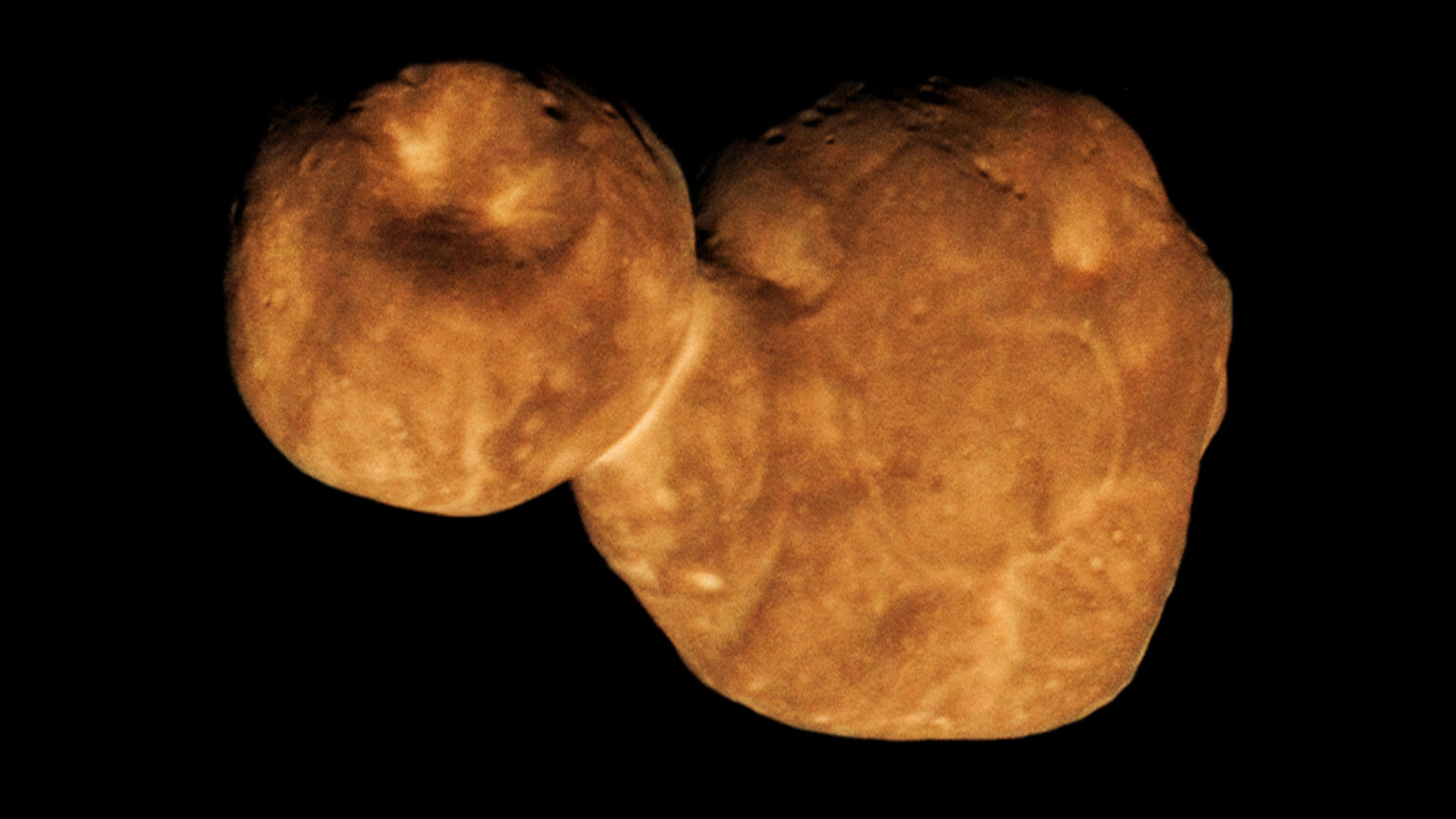Astronomers have analyzed the chemical composition of the asteroid Arrokoth, which is located in the Kuiper Belt. It was studied by the New Horizons spacecraft. The researchers concluded that the ice on it might be incredibly ancient. And this is of great importance for understanding the evolution of the Solar System.

Asteroid Arrokoth
An article recently published in the journal Icarus presents the results of a study of the Kuiper belt object 486958 Arrokoth, which shed new light on the conservation of volatile substances such as carbon monoxide (CO) in such distant celestial bodies.
The article “Retention of CO Ice and Gas Within 486958 Arrokoth” was co-authored by Dr. Samuel Birch of Brown University and Dr. Orkan Umurhan, Senior researcher at the SETI Institute. Using the example of an asteroid explored by the New Horizons probe several years ago, it proves that many Kuiper Belt objects can still retain their original volatile ice, challenging previous ideas about the evolutionary path of these ancient objects.
Previous models of the evolution of Kuiper belt objects needed help in predicting the proportion of volatiles in these cold, distant objects. Many of them relied on cumbersome simulations or false assumptions, underestimating how long they could survive.
A new study suggests a simpler but more effective approach, comparing the process to how gas flows through porous rock. It suggests that Kuiper belt objects such as Arrokoth can retain their volatile ice for billions of years, forming a kind of underground atmosphere that slows down its further loss.
Kuiper Belt “Ice Bombs
“I want to emphasize that the key thing is that we corrected a deep error in the physical model people had been assuming for decades for these very cold and old objects,” said Umurhan. “This study could be the initial mover for re-evaluating the comet interior evolution and activity theory.”
This study challenges existing predictions and opens up new ways to understand the nature of comets and their origin. The presence of such volatile ice in Kuiper belt objects supports an exciting theory about these objects as “ice bombs” that activate and exhibit cometary behavior when their orbit changes closer to the Sun. This hypothesis may help explain phenomena such as the intense outburst activity of comet 29P/Schwassmann–Wachmann, potentially changing the view of comets.
As co-executors of the future CAESAR mission, the researchers are applying a new approach to understanding the evolution and activity of cometary bodies. This research is important for future experiments and is a reminder of the eternal mysteries of our Solar System that are waiting to be revealed.
According to phys.org
Follow us on Twitter to get the most interesting space news in time
https://twitter.comne/ust_magazine


